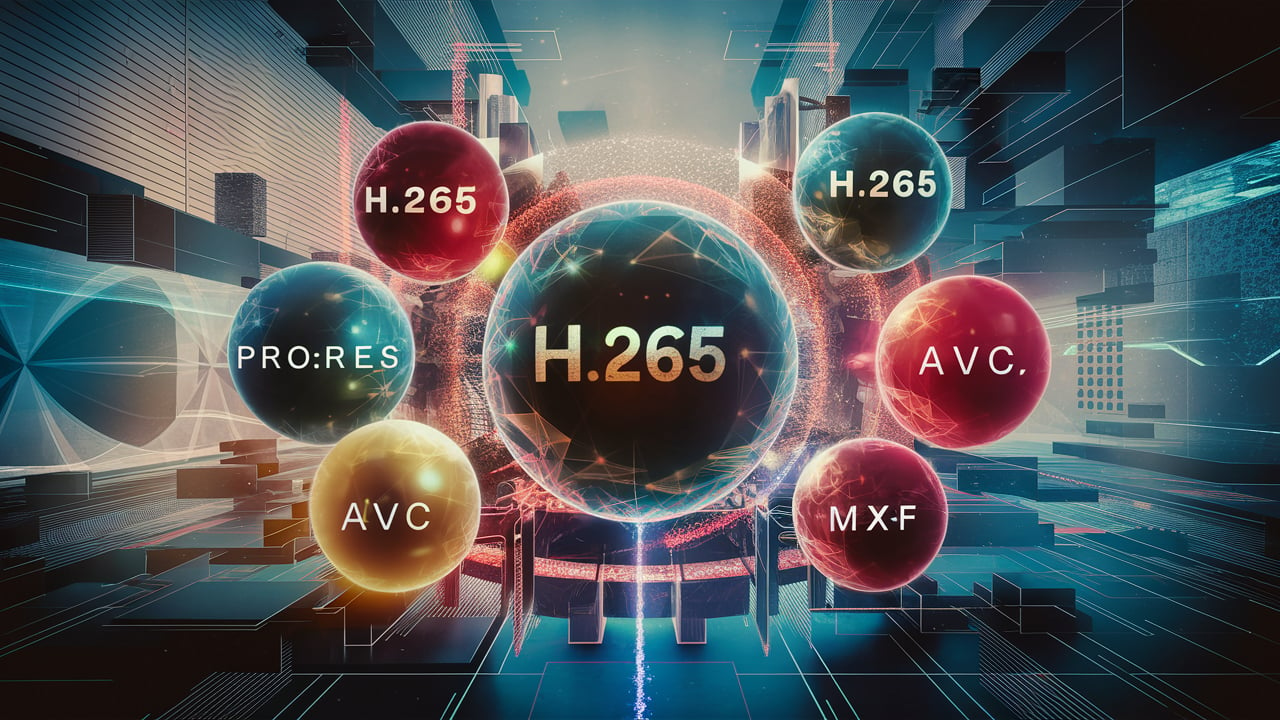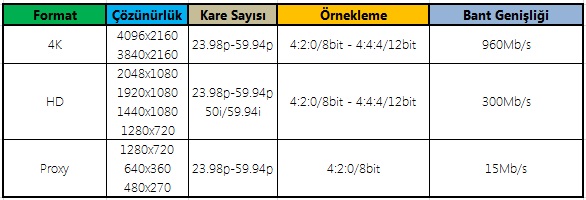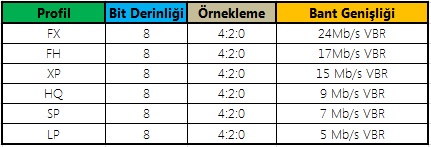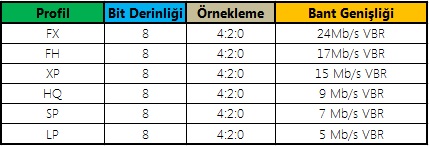Broadcast Codecs and Formats

I will try to provide a surface-level overview of the codecs and formats commonly used in HD television broadcasting, NLE editing, and HD Camcorders.
DNxHD/Avid
Developed by Avid for production purposes, this is an open-source codec. It can create files in MXF or QuickTime wrapper formats. It uses I-Frame Only compression infrastructure and is a good alternative to Apple’s ProRes format. In the table below, you can examine the bit depth, sampling, and bandwidth of DNxHD.

ProRes/Apple
A production codec developed by Apple, it offers I-Frame only compression infrastructure. It creates a file in QuickTime wrapper and can be used as an alternative to Avid’s DNxHD format. In the table below, you can examine it in terms of bit depth, sampling, and bandwidth.

XAVC/Sony
A codec developed by Sony, supporting H.264 level 5.2 (current highest level). It can use both I-Frame and GOP infrastructure. Sony prefers this codec especially for 4K resolutions and high frame rate shots. It’s considered above MPEG2 but below MPEG4 SStP mastering level. It uses the MXF Op1A wrapping technique that Sony generally uses in its camcorders. XAVC-S, which uses Mp4 wrapper, is also available for professional levels with a maximum 4K resolution. XAVC can work with 8, 10, or 12-bit depth and 4:2:2 or 4:4:4 color sampling. You can examine it in more detail in the table below.

AVC-Intra / Panasonic
A codec developed by Panasonic and used as standard in P2 cameras, it uses the MXF Op-Atom wrapper. It’s based on AVC/H.264 and uses Intra-Frame compression infrastructure. AVC Intra has classes of 50, 100, and 200. In these three classes, AVC Intra 50 uses 4:2:0 sampling with 10-bit color depth, while AVC 100 and 200 use 4:2:2 sampling. It can also reach 4:4:4 sampling with AVC-Intra 444. Since the compression is I-Frame Only based, it’s suitable for production and is less affected by generational losses compared to GOP-based formats. You can examine the details in the table below.

XDCAM/Sony
A codec developed by Sony, it started to be used in SD standards. I’ll share information about it as XDCAM HD. In a previous article, I made a comparison of XDCAM and P2. Here, I’ll briefly mention that it uses Mpeg-2 Based and Long-GOP compression infrastructure and creates a file structure in MXF-Op-1a wrapper.

XDCAM EX /Sony
A format used by Sony in its SxS media camcorders, it’s a codec capable of recording in 4:2:0 sampling, 8-bit color depth, and 1920x1080 format. It uses Mpeg-2 Long Gop Compression structure. In the table below, you can examine the bandwidth according to resolutions.

AVCHD / Sony and Panasonic
Developed for Consumer Camcorders. It’s a codec based on AVC/H.264, with 4:2:0 Color Sampling and 8-bit color depth. It supports Main and High profiles of H.264. Sony uses this codec infrastructure in AVCCAM and NXCAM series, while Panasonic uses it in AVCHD Pro series. In the figures below, you can see which bandwidth Sony and Panasonic use in which profile.
Sony Camcorders:

Panasonic Camcorders:

HDCAM / Sony
A tape-based recording format developed by Sony. It has a resolution of 1440x1080 but can be upscaled to 1920x1080. It’s a competitor to Panasonic’s DVCPRO HD Format.
| Profile | Resolution | Bit Depth | Sampling | Bandwidth |
|---|---|---|---|---|
| HDCAM | 1440 x 1080 | 8 | 3:1:1 | 144 Mb/s |
DVCPRO HD / Panasonic
A DV-based tape-based format, it’s an improved version of DVC PRO (25 and 50Mb/s) increased to 100 Mb/s. It doesn’t support true Full HD resolution. It’s a competitor to Sony’s HDCAM Format.
| Profile | Resolution | Bit Depth | Sampling | Bandwidth |
|---|---|---|---|---|
| DVCPRO HD | 1440 x 1080 | 8 | 3:1:1 | 100 Mb/s |
HDCAM-SR / Sony
A format accepted as tape-based HD mastering by many TV channels. It’s based on Mpeg-4 Part 2.

Blu-Ray
The first versions that came out in 2006 used MPEG. Currently, AVC/H.264 and VC-1 are being used.
VC-1 /Microsoft
Accepted as SMPTE 421M standard in 2006. It’s seen as the equivalent of the AVC/H.264 format. It’s an accepted standard for Blu-Ray and HD-DVD. It’s used in Xbox360, Playstation3, WMV3, WMV 9 Advanced Profile (WVC1), WMVA, and Silverlight technologies.

VC-2 / Dirac / BBC
Developed by BBC. It’s a royalty-free codec. It’s twice as effective as Mpeg-2 and equivalent to MPEG-4 AVC/H.264. Its version using I-Frame Compression infrastructure was accepted as the VC-2 standard. It was last used by BBC in the Beijing 2008 Olympics.
VC-3
Avid DNxHD Codec was accepted by SMPTE as the VC-3 Standard.
H.265/HEVC
H.265, which I discussed in detail in my previous article, is the most current codec. Its usage is increasing in parallel with the development of 4K broadcasting. In the figure below, you can see a comparison of H.265/HEVC with other codecs.

In this article, I tried to inform you about Broadcast Codecs and formats as best as I could. I hope I have succeeded in this. Looking forward to seeing you in my next article.